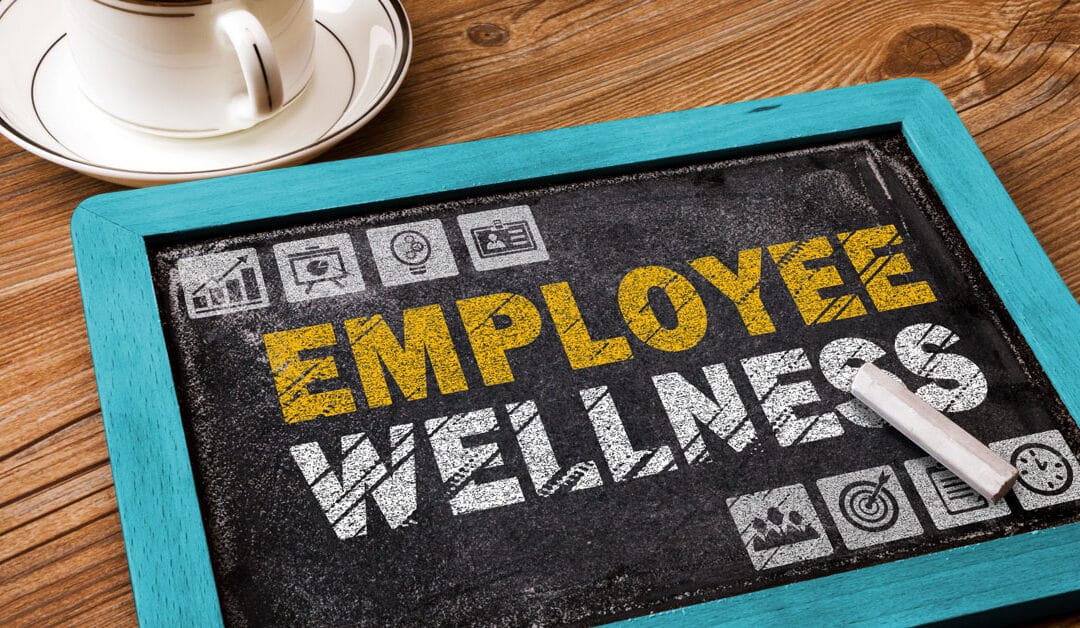Employee Wellness….What Is It and
How Can My Practice Get Involved?
The social work profession is noble and founded on service, integrity, and clinical expertise. It can be a stressful and dangerous occupation. The nation is grateful for what you do, AND SO ARE WE! Thank you!
A study of U.S. employees said work is their most significant source of stress. (Farrell & Geist-Martin, 2005, Communicating Social Health. Management Communication Quarterly, 18 (4), 543-592, p.-544). Wellness programs used to be focused on primary health categories such as diet, exercise, and disease prevention lifestyle choices like smoking cessation programs. Some employers offered campus-based exercise facilities, health-related lectures, and clinics; others provided membership in local fitness centers.
Aside from the philanthropic and public relations image projected by employers regarding their employee wellness programs, there is indeed a correlation between healthy employees and reduced utilization of short-term disability. A 2010 study found that for every $1.00 paid by the employer into that employer’s employee wellness program, the employer’s healthcare costs decreased by $3.27. Absenteeism at work fell by $2.73. (Baicker, K., Cutler, D., and Sung, Z., 2010, Workplace Wellness Programs Can Generate Savings, Health Affairs, 29(2), p.-304-311).
This favorable result increases productivity and profit for employers. It also lowers the probability and expense of utilizing long-term disability insurance benefits and the associated costs. This is why life and health insurance carriers increasingly include employee wellness benefits in their worksite employee group insurance plans. From a claims loss perspective, proactive employee wellness awareness and related activities that perpetuate employee wellness reduce the frequency and severity of incidents and future claims losses.
While these dated categories still exist with employers, a more contemporary expanded definition of employee wellness programs exists. COVID-19 drove people to work at home. Consequently, there is now resistance to returning to the office or work venue. Participation in employee wellness programs mostly centered around the employer’s location, and the interaction within the office campus has decreased. As a result, the increased isolation of working at home, the lack of accessibility to convenient office campus-based employee wellness resources, and reduced in-person human interaction have caused an increase in mental health issues.
An October 2022 study published by the U.S. Surgeon General found that an increasing number of workers have growing and chronic stress struggling with balancing work with personal life. (Rough Notes magazine, p. 48, January 2023). A study by the American Psychological Society found that 76% of respondents reported symptoms of reduced mental health, which had an alarming increase of 17% during the 2020 and 2021 COVID-19 pandemic period. As a result, social connection declined, which increased isolation anxiety. (Ibid.) Riding a stationary exercise bike alone in the basement will help an employee’s physical vitals, but there remains a deprived gap in social interaction. So, mental health issues and depression raise their ugly heads.
Employers, such as Nationwide Insurance Company, are increasingly responding with a focus on well-being and mental health by offering webinars, expert speakers such as social workers and psychologists, and related programs supporting mental wellness topics. (Ibid).
Some of the content and therapy tools can be characterized in use for chronic mental illness as stress debriefing techniques but without the pretextual acute critical incident.
So how can social workers and psychologists get involved? A broad internet search cast over the subject identified six categories of wellness that require practitioner expertise:
- Mental health services and coaching mental illness
- Medication management
- Work-life services
- Manager training
- Evidenced-based therapy (tracking the efficacy of treatment plans with their effectiveness)
- Critical incident support with stress debriefing
Many companies turn to outsourced resources for wellness providers and program expertise. Any companies utilize employee wellness programs to some degree. For example, Tinder’s wellness program turned to an outsourced company called Fitspoke as a corporate program outsourcing wellness provider. Moreover, many companies hire social workers as their Human Resource employees but still utilize outsourced providers to a high degree. These companies use their Human Resources department as the gateway to import behavioral health agencies, insurance providers that offer wellness services, associations with expert members as subject matter expert resources in wellness delivery, health insurance companies that provide employee worksite services, and supply side outsourced providers.
As a life and health insurance carrier, for example, AFLAC offers the employees of its worksite client employers a $60 annual benefit for routine health examinations and preventative testing. Colonial Life/UNUM insurance company provides a similar wellness benefit through its worksite employer wellness programs with a $100 annual benefit limit.
As an outsource employee wellness provider, Exos offers solutions for in-person, worksite, and remote employees; Exos works with 24% of the Fortune 100. Companies like Exos are likely to engage practitioners as needed to deliver and possibly develop wellness programs. SHRM (Society for HR Management) has a vendor directory (see https://vendordiorectory.shrm.org) to identify and explore potential opportunities to further develop your practice in the employee wellness category.
As a practitioner interested in exploring options for developing more therapy solutions in your practice and becoming more involved in the employee wellness category, there are several choices that you can use to connect with the employee wellness providers and participate as a supply-side resource.
Preferra Insurance Company, RRG, will continue to ensure its policyholders are in the employee wellness category for Professional Liability, General Liability, and Cyber Liability insurance risks and perils. You can count on us to protect you!

